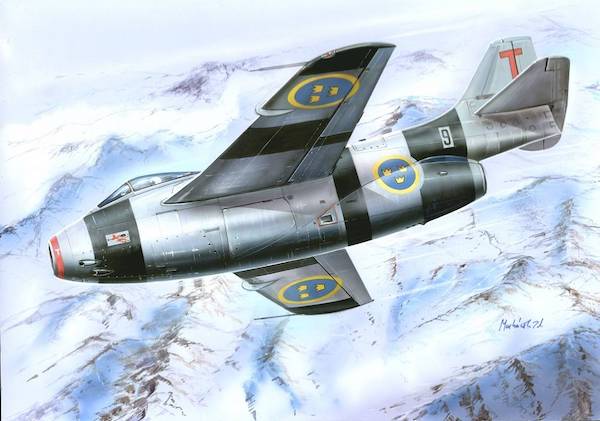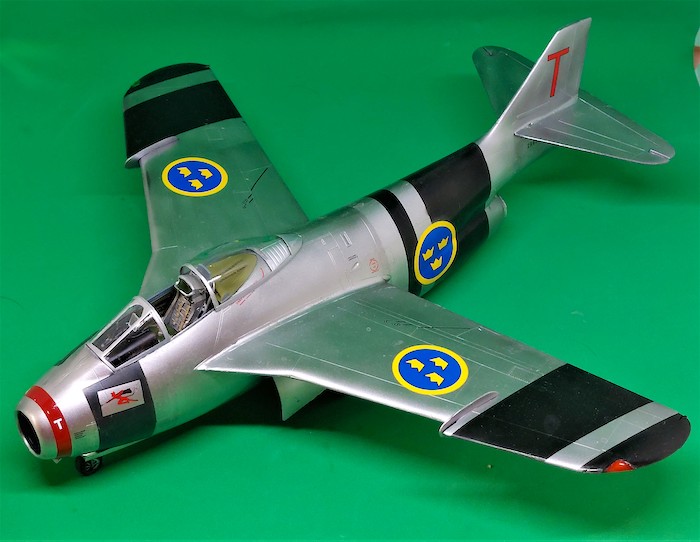
Full Review with Rob Ruscoe
Just before we get started, here’s a look at how it all turned out…

Nicknamed ‘Flygande Tunnan’ or the Flying Barrel by its crews, the J-29 is a Swedish fighter designed and manufactured by Saab in the late 1940s. The original concept had a straight wing but after the design team obtained German swept wing data from Switzerland at the end of the war, the design was changed to incorporate a 25 degree swept wing. The aircraft was originally to be powered by a De Havilland Goblin turbojet but again was re-designed to accept the later more powerful Ghost engine when that became available. The fuselage shape was chosen to provide a straight through airflow to the engine in order to garner the maximum thrust. It also had to be wide enough to allow the main undercarriage to retract into the sides thereby allowing a thin wing to minimise drag. The first prototype first flew in September 1948 and proved to have excellent flying qualities and performance.
Saab soon adopted the name Tunnan as the official name for the J-29 which went on to have a production run of 661 airframes. The J-29F was the final variant and was the only one equipped with an afterburner and a dog-tooth wing. Armed with four 20mm cannon, later aircraft could also carry two Swedish built AIM-9B Sidewinder air-to-air missiles. Besides Sweden, the Austrian Air Force also operated two squadrons of J-29s in the fighter-bomber role. A number of J-29s survive in various museums, including one at the Midland Air Museum at Coventry, but only one remains airworthy with the Swedish AF Heritage Flight.